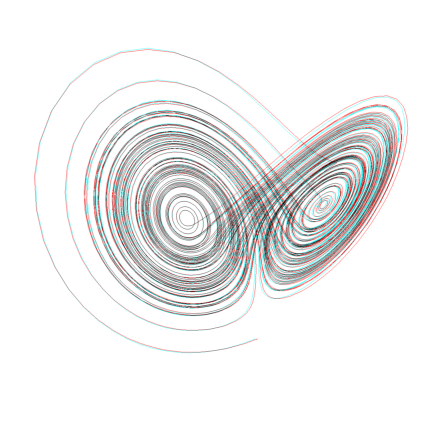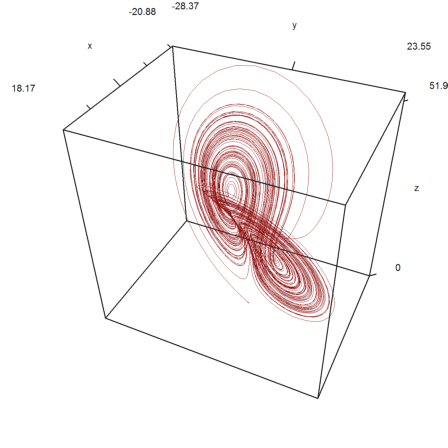by Alain Busser
This notebook computes the famous Lorenz attractor, an unstable iteration.
Press Ctrl-R to run all commands at once.
>function compute () ... global pts,n,s,b,r,dt,M; for i=1 to n; x=M[1]; y=M[2]; z=M[3]; pts[1,i]=(s*(y-x))*dt+x; pts[2,i]=(r*x-y-x*z)*dt+y; pts[3,i]=(x*y-b*z)*dt+z; M[1]=pts[1,i]; M[2]=pts[2,i]; M[3]=pts[3,i]; end; return 0; endfunction
>n=10000; ... pts=ones(3,n); ... s=10; b=8/3; r=27; dt=0.01; M=normal(1,3)/1000000; ... compute();
Zoom now with +/-, or use the cursor keys to turn. You need red/green glasses to see this properly.
>plot3d(pts[1],pts[2],pts[3],>wire,linewidth=0.5,>anaglyph,<frame, ... angle=30°,scale=1.5):

The same in simple 3D.
>plot3d(pts[1],pts[2],pts[3],>wire,wirecolor=red,linewidth=0.2, ...
zoom=3,height=40°):
